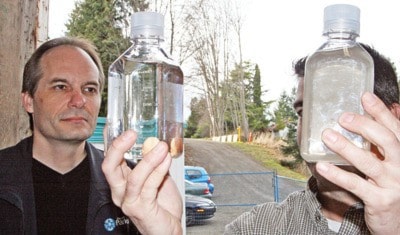The Englishman River Water Service (ERWS) is pilot testing water treatment for the new river intake and treatment facility that will be built over the next five years.
The ERWS, a joint venture between the City of Parksville and the Regional District of Nanaimo, narrowed the possible treatment options to two basics that could work for the unique local conditions.
Associated Engineering process designer Linda Wojcicka has been working at a small scale treatment plant, which is now operational in a trailer off Turner Road.
She tests the water throughout the day, before and after treatment by the traditional sand and coal filtration versus a more modern plastic PALL membrane system.
From the results Associated Engineering will then make recommendations to the city including projected long term operational and capital costs.
Parksville mayor Chris Burger pointed out that while people tend to focus on the capital costs, spending more up front can often save tax payers money over the 20 year operational period they are looking at.
Along with the safety of the drinking water, there is a lot of consideration of the esthetics.
The river provides difficult conditions with turbidity changing constantly with the seasons and hour to hour through the day.
EWRS program manager Mike Squire said when the river is clear enough to draw from currently (with minimal treatment) it averages around three NTU (nephelometric turbidity units) but it can spike over 200.
In the past they have seen the incoming water change from perfectly clear to muddy in the space of an hour.
While incoming provincial regulation will call for turbidity of one NTU or less from surface water, down from five NTU currently, their tests are resulting in a turbidity around 0.012 NTU.
The current testing will fingerprint the water’s characteristics that engineers will design the appropriate technology around.
Wojcicka said that so far it appears the membrane system is handling the conditions better and faster, using less chemicals and labour and producing less waste, but uses more energy.
The ERWS board will make the final decision based on input from Parksville and the RDN.
The treatment testing is not directly related to parallel work exploring an ASR (aquifer storage and recovery) proposal, which the city will begin physical research on in the next month or so.
They estimate at a conceptual level that the first stage of the treatment facility and intake will cost $37 million in 2010 dollars, with a total cost of $52 million over the next 40 years.
